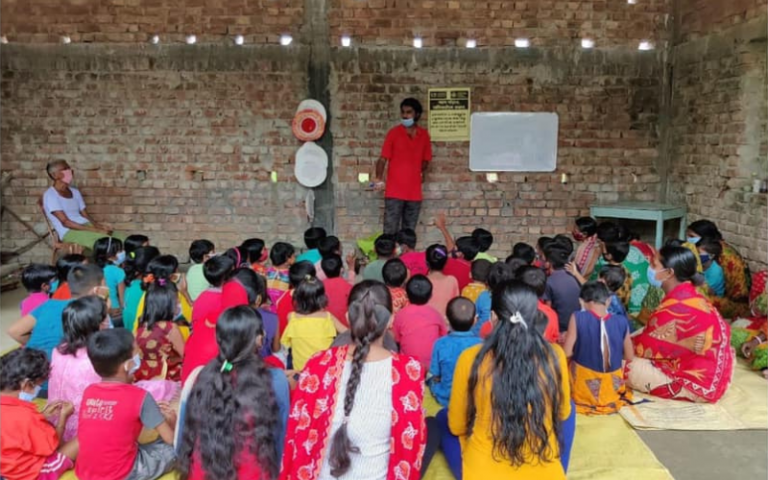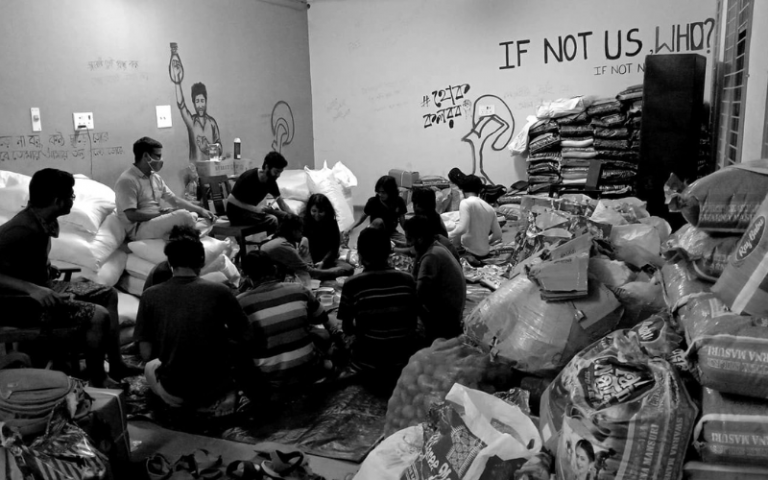How solidarity networks deliver community care in India and the UK
Dr Raktim Ray (UCL Bartlett Development Planning Unit) used Global Engagement Funds to explore how solidarity networks provided care to vulnerable communities during the Covid-19 pandemic.

11 July 2022
During the Covid-19 pandemic, groups in communities around the world mobilised to provide care and support to vulnerable individuals. However, the needs and uptake of care that was provided varied in different places.
To understand the variation in the care provided by solidarity groups, and the community response to this, UCL partnered with the School of Planning and Architecture (Bhopal) in India. Through a comparative study on civil society solidarity networks in Kolkata and London, the team wanted to better understand the role these groups do and can play in society.
Different responses to care
“The idea for this project came about when I was living in Harrow during the Covid-19 pandemic,” explained Raktim. “A lot of communities were self-organising at that time to help people, and I participated in Mutual Aid Harrow. But we didn’t get many calls from people who needed help. I wondered why there was this lack of response from the community.”
To understand the issues further, Raktim looked towards the city of Kolkata, where he is from, and saw that there were also a lot of solidarity networks mobilising to support people during the pandemic. But these networks were receiving a lot of requests for help. Identifying a need to understand the dynamics of solidarity networks and those who needed help, Raktim developed this comparative study between Kolkata and London.
The team decided to focus on one solidarity network in each city: Mutual Aid in the UK, and the Quarantined Student-Youth Network (QSYN) in Kolkata. Through these networks, they ran digital surveys and in-person surveys when the lockdowns were lifted.
Varying objectives among solidarity groups
The first hurdle the team encountered was that it was difficult to get responses from people in the UK, because many of the solidarity groups operating under the Mutual Aid umbrella dissolved quickly as the lockdowns lifted. On the other hand, QSYN continued to thrive, with more than 800 volunteers still supporting communities. This fact alone highlighted the differences in the way the groups operated.
“In the UK, Mutual Aid was trying to help with things like grocery shopping and picking up medications for vulnerable people,” Raktim said. “Whereas in Kolkata, there was a big set of objectives, and QSYN set up larger scale solutions such as community kitchens and schools.”
The scale of what each group was trying to achieve was notable. In addition, many solidarity networks had already been operating in Kolkata for many years prior to the Covid-19 pandemic. “As they were already doing voluntary work in the communities they were serving, there was a trust and faith established that helped these networks flourish,” Raktim explained. “I realised that in the Southeast Asian context, the state was completely absent from any support. That’s why people needed these networks in Kolkata.”

The research also revealed how differences between volunteers and possible care recipients in London impacted the community’s engagement with solidarity groups. “In the east London Mutual Aid network, most of the volunteers were white, middle class individuals,” Raktim said. “Some of the respondents told us that class and racial differences meant trust did not develop so easily. In addition, the mosque and other groups were already helping these communities.” Some respondents also described how Mutual Aid became more like Neighbourhood Watch in some communities, with volunteers alerting police to groups of young men on the street. “That also broke the trust among communities,” Raktim said.
In the UK, there was a very clear distinction of who was providing care and who was receiving it, but this was not the case in Kolkata. “They blurred the boundary between care giver and receiver,” Raktim described. “People who were eating in those community kitchens were also part of the process of carrying the groceries and cooking, so it was more of a collective action.”
Solidarity networks as infrastructure
Raktim hopes this research will help people see solidarity networks as being a form of infrastructure. “When we talk about infrastructure, we only talk about hard infrastructure like roads, railways, airports and water supply,” Raktim said. “We don't talk about this soft infrastructure which is built on social capital, and which happens through a network of people.” Although the solidarity groups in Kolkata saw greater success compared to London during the pandemic, these types of groups can succeed anywhere if they have a clear political objective of emancipation and social change.
As a result of this project, the team produced a series of six podcasts about the topic, featuring different solidarity networks, activists, academics and journalists. The team also contributed a chapter to an edited volume, Psychosocial Perspectives on Community Responses to Covid-19: Networks of Trust and Social Change, about community efforts during the Covid-19 pandemic. In addition, the team received additional grants to expand the research to explore other kinds of solidarity networks, in partnership with academics from King’s India Institute, Ashoka University in India, and artists based at Somerset House. One output of this collaboration will be a visual exhibition. “The Global Engagement Funds helped to kickstart the process into this area of research, paving the way for a larger piece of research,” Raktim said.
Links
- Politics of Care During Pandemic Time, project and podcasts
- UCL and India
- UCL in South Asia
- Images: Quarantined Student-Youth Network (QSYN)
For the latest news about UCL’s international activity, partnerships and opportunities, subscribe to our bimonthly Global Update newsletter.
 Close
Close

